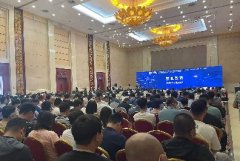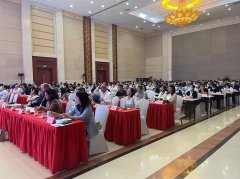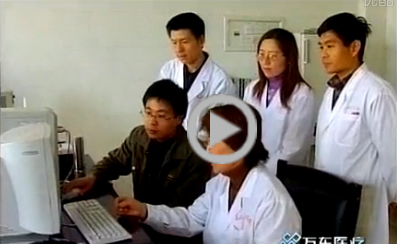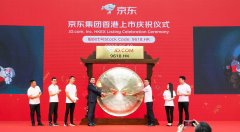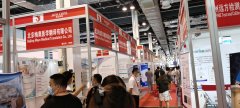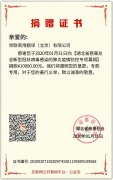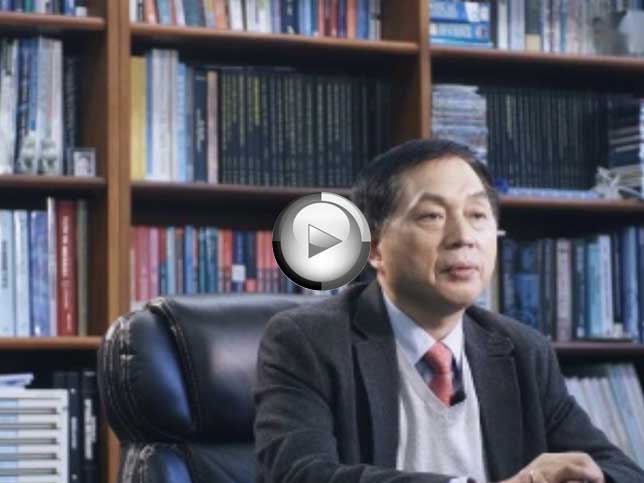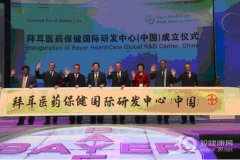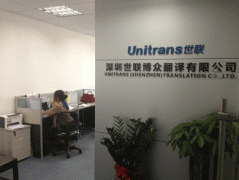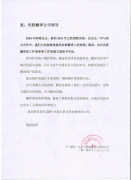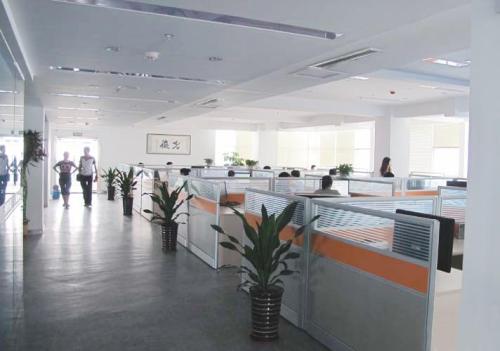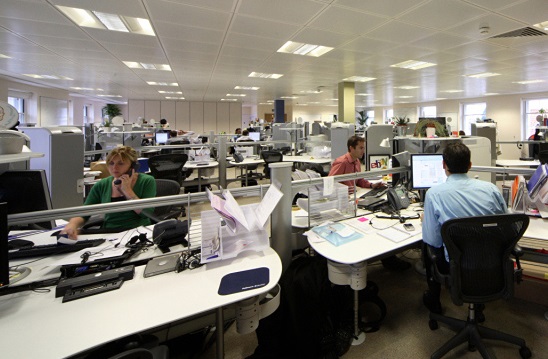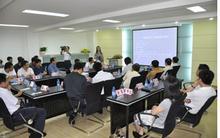上海翻译公司完成医学英文翻译

For Research Use Only.
Not for use in diagnostic procedures. |
|
|
P/N 495111 |
|
|
48 |
|
|
|
|
Background Information
Fine needle aspiration (FNA) is a mimimally invasive method for obtaining tumor biopsies and commonly used for the analysis of thyroid nodules. FNA samples can be an invaluable sample source for molecular diagnostics; however, the time lag between sampling and testing could lead to degradation of nucleic acids in the sample and poor quality results in clinical tests if sample integrity is not preserved quickly. RNA
Retain® is a clinically validated and cGMP manufactured sample collection and cellular nucleic acid (NA) preservation solution which can be used to preserve FNA samples immediately at the point of collection. Asuragen has developed the miR
Informâ Thyroid Total Nucleic Acid Extraction Kit which isolates all the nucleic acids including DNA, RNA and microRNA from FNA samples collected in
RNARetain in a single workflow. The samples can be subsequently tested in all nucleic acid based testing protocols including the miRinform® family of assays.
Principle
The miRInform thyroid FNA isolation protocol is designed for isolation of fine needle aspirate samples preserved in RNARetain. A unique feature of this method is that the entire volume of RNARetain is processed, capturing total nucleic acid (RNA, DNA and micro RNA) from the tissue and cells in the sample as well as from small cell fragments that do not pellet reliably in RNARetain. Samples are lysed in a proprietary lysis buffer, proteins are removed with organic extraction and total nucleic acid is purified using spin columns. Eluted TNA can be used directly in nucleic acid based testing including miRInform® Thyroid assays.
Kit Components (P/N 495111 miRInform Total Nucleic Acid Extraction Kit)
Reagents Supplied with this Kit
|
Item # |
Description |
Volume |
Storage Temp |
|
145278 |
miRInform Lysis Buffer |
3x 90 mL |
18 to 25 ˚C |
|
145279 |
miRInform Prewash Buffer |
12 mL |
18 to 25 ˚C |
|
145280 |
miRInform Wash Buffer |
25 mL |
18 to 25 ˚C |
|
145281 |
miRInform Elution Buffer |
10 mL |
18 to 25 ˚C |
|
145282 |
20 mL Syringe Barrel |
50 units |
18 to 25 ˚C |
|
145283 |
Filter-top Adaptor |
50 units |
18 to 25 ˚C |
|
145284 |
Filter-bottom Adaptor |
50 units |
18 to 25 ˚C |
|
145285 |
Filter Column |
50 units |
18 to 25 ˚C |
|
145286 |
Collection Tube |
100 units |
18 to 25 ˚C |
Handling and Storage
-
Store the reagents at room temperature (18-25°C).
Number of Reactions
-
The provided reagents are sufficient for extraction of total nucleic acids from up to 48 FNA specimens stored in RNARetain®.
Reagent Stability
-
The product will maintain performance through the expiration date printed on the label when stored under the specified conditions.
Reagents Required but not Provided
Note: This kit is only validated with reagents from supplier listed in the table below
|
Reagent |
Supplier |
Catalog number |
|
β-Mercaptoethanol |
VWR |
80501-154 |
|
Acid phenol/ Chloroform (5:1), pH 4.5 |
Amresco |
E277 |
|
Glycogen (5 mg/mL) |
Life Technologies |
AM9510 |
|
Ethanol |
Sigma |
EM-EX0276-1 |
Consumables & Equipment Required but not Provided
-
Biological Safety Cabinet
-
Refrigerated High Speed Centrifuge adjusted to 21 ± 2 °C (Beckman Allegra or equivalent), rotor rated for speeds of at least 10,000 xg, and adapters for 15 ml conical tubes.
-
Heat block
-
Microcentrifuge
-
NanoDrop
-
Vacuum Manifold
-
37-42°C incubator
§ Bleach
§ Deionized Water
§ 70 % Isopropanol
§ RNAse Zap
§ Calibrated traceable timer
§ 20 µL, 200 µL and 1000 µL filtered tips
§ 10 mL Disposable borosilicate glass pipettes
§ 10mL, or 25 mL serological pipettes
§ Nalgene 15 mL round bottom tubes and 16 mm caps
Warnings and Precautions
· Use proper personal protective equipment. Wear appropriate protective eyeglasses, protective gloves, and protective clothing when working with these materials
· Follow Universal Precautions in compliance with OSHA 1910:1030, CLSI M29, or other applicable guidance when handling human samples.
· Phenol is hazardous and should be handled with appropriate precautions including protective eyeglasses, protective gloves, and protective clothing. Steps which require the use of phenol should be done in a fume hood.
· Use nuclease-free filter pipette tips and nuclease-free tubes.
-
Nucleic acid carry-over contamination can result in false positive signals. Use appropriate precautions in sample handling, workflow, and pipetting. Label all consumables in the workflow to match samples processed.
-
The workflow has been validated with the source supplier listed for required reagents. Any other sources may not be compatible with the kit.
· Do not pool components from different reagent lots. Do not use reagents after the labeled expiration date.
· Prior to use, ensure that all instruments are calibrated according to the manufacturer’s instructions.
· Safety data sheets (SDSs) are available upon request.
miRInform Thyroid FNA Total Nucleic Acid Extraction Kit Protocol
Overview
Reagent Preparation
Label Tubes and Vials
Lyse Sample
Acid-Phenol:Chloroform extract
Add 2.4 Volumes of 80% ethanol, bind to filter
Prewash and wash steps using vacuum manifold and centrifuge
Elute |
Reagent Preparation
|
Lysis buffer preparation |
Warm Lysis buffer to between 42°C +/- 2°C until all of the crystals go into solution.
|
|
Prepare mixture of Lysis buffer and beta-mercaptoethanol for samples to be processed |
Determine the appropriate amount of miRInform Lysis Buffer and BME to be used for all samples. Each sample will require a mixture of 5.5 mL Lysis Buffer and 38.5 µL BME. |
|
|
Calculate mixture needed based on the number of samples: |
|
|
Add 38.5 ul/sample of Beta-Mercaptoethanol (BME) to the lysis buffer according to the calculation below. BME must be added the day of use and any unused lysis buffer + BME mix should be discarded.
|
|
|
|
Component |
Volume per Sample |
Number of Samples |
Total Volume |
|
miRInform Lysis Buffer |
5.5 mL |
______ |
_______ |
|
Beta-mercaptoethanol |
38.5 µL |
_____ |
_______ |
|
|
|
For 16 samples, the volume of each of the Lysis Buffer is already matched. Add 630 µL of 2-mercaptoethanol to a fresh bottle of lysis buffer (90 mL). Mix well and place a check mark in the box on the label to indicate that ethanol has been added.
For more than 16 samples, add BME based on the total volume of lysis buffer required.
|
|
Prewash buffer preparation |
Before using for the first time, add 28 mL of ethanol (100%) to the Prewash bottle (small amber bottle). Mix well and indicate on the label that ethanol has been added.
|
|
Wash Buffer preparation |
Before using for the first time, add 100 mL of ethanol (100%) to the Wash bottle (Clear bottle). Mix well and indicate on the label that ethanol has been added.
|
|
Equilibrate Acid Phenol:Chloroform (APC) to 18 – 25 °C. |
Equilibrate ACP in bottle to room temp (18 - 25 °C). This procedure requires 6.6 mL per sample (includes 10% overage). For higher throughput, APC may be added with a pump.
|
|
Heat Elution Buffer to 95°C |
Heat an aliquot of Elution Buffer, 90 µL per sample (includes 10% overage), at 95 ± 2 °C in a 1.5 or 2 mL tube. Note: heating the aliquot should be done no more than 30 minutes before use.
|
|
Prepare 80% Ethanol |
Each sample requires about 13 ml of 80 % ethanol (includes 10% overage). For every liter of 80% ethanol, add 200 mL of water to 800 mL of 100% Ethanol. |
Additional preparations
|
Pre-fill 15 mL tubes with prepared Lysis buffer and warm to 37C |
For each sample, label tube with sample ID and add 5 mL of prepared miRInform lysis buffer. After filling, incubate tubes at 37C until ready for use. Incubation is necessary to prevent buffer from precipitating.
|
|
Pre-aliquot 3 µL of glycogen in 50 mL conical tubes |
For each sample, label 50 mL tubes with sample ID and add 3 µL of glycogen to each tube.
|
|
Pre-assemble filter column adapter set |
For each sample, assemble the filter column apparatus as shown in figure 1 below |
|
|
1. Connect syringe barrel (A) to filter-top adapter (B)
2. Attach filter column (C) to filter-top adapter (B). Fit should be snug
3. Attach filter-bottom adapter to bottom of filter column. Complete assembly (E)
4. Attach assembly to vacuum manifold (F)
|
|
Label Syringe barrel and collection tubes |
a) Label each syringe barrel with a sample ID.
b) Label 2 collection tubes per sample (provided with kit) with sample ID (one for washes and the other for final elution)
|
Figure 1
Individual components of filter column assembly (upper left): Syringe barrel (A), Filter-top adapter (B), Filter column (C), Filter-bottom adapter (D). Completely assembled (E, Lower left). Two filter assemblies attached to vacuum manifold (F, Right). |
Isolation Procedure
Important:
a) Perform lysis steps at room temp (18 - 25 °C) and do not place the sample on ice at any time during the procedure. Lysis buffer contains high salt and will precipitate if placed on ice.
b) All centrifugation steps are performed at 10,000 x g (RCF) and 22C +/- 2°C
|
1. Mix sample with 5 mL of Lysis buffer and vortex |
a. Briefly vortex the RNARetain sample vial and use a pipette (or alternatively pour) to transfer contents into a 15 mL tube (prefilled with prepared lysis buffer). Vortex briefly to mix. Use ~1 mL of the vortexed solution to rinse out the original specimen vial to collect any remaining specimen and add back to the 15 ml tube. Vortex briefly to mix. |
|
|
b. Vortex for 20-30 seconds to thoroughly mix the sample with lysis buffer. Inspect the sample to see if it has been thoroughly lysed. If tissue debris is visible, vortex the sample for an additional 20-30 seconds to thoroughly lyse the sample. Repeat 2-3 times if necessary. |
|
2. Organic extraction with 6 mL of Acid Phenol:Chloroform |
a. Add 6 mL of Acid Phenol:Chloroform (APC) at 18 – 25 °C. Re-cap and invert the tube 2-3 times, then vortex for 30 seconds to mix. Incubate at 18 – 25°C until a separation into organic and aqueous layer is observed.
|
|
|
b. Centrifuge for 15 minutes at 10,000 X g at 21 ± 2 °C.
|
|
|
c. Remove approximately 85 to 90% of the aqueous layer without disturbing the interphase or organic phase and transfer to 50 mL conical tube with glycogen. Note the volume of collected aqueous layer on the a sample information table to help calculate volumes of binding buffer needed per sample below |
|
|
Troubleshooting point: if sample has a persistent large white interface, transfer the aqueous phase (including the white material) and re-spin for 5 minutes in a new 15 mL centrifuge tube to pellet. Carefully remove supernatant and transfer to a 50 ml conical tube with glycogen.
|
|
3. Add 2.4 volumes of 80% ethanol |
a. Add 2.4 volumes of 80% ethyl alcohol, cap tube, invert several times, vortex to mix. For example, a sample with 4.5 ml aqueous volume would require 10.8 ml of 80% ethyl alcohol. Note the volume added on the sample information table below. |
|
|
Critical: use 80% ethyl alcohol for this step.
|
|
4. Bind sample to column on vacuum manifold |
a. Use a 25 mL pipette (or alternatively, pour) to transfer contents into a column assembly on vacuum manifold.
|
|
|
b. Turn on the vacuum (to -20 mm Hg) to filter the lysates. Stop the vacuum as soon as the lysate/ethanol mixture has passed through the filter to avoid over drying. |
|
|
Important: Drying the filter during the vacuum filtration steps could leave salt crystals on the membrane which are not easily washed off the filter and can contaminate the final elution.
|
|
5. Wash with 650 µL of Prewash buffer (small amber bottle) |
Add 650 µL of miRInform Prewash buffer (small amber bottle) to each reservoir and turn on the vacuum to pass the Prewash solution over the filters. Stop the vacuum as soon as the Prewash buffer has passed through the filters to avoid drying the filter membrane.
|
|
6. Wash with 650 µL of miRInform Wash buffer |
Add 650 µL of miRInform Wash buffer (clear bottle) to each reservoir and turn on the vacuum (to -20 mm Hg) to pass the Wash solution over the filter.
|
|
|
Important: it is necessary to perform the following wash steps using a centrifuge to remove excess buffer salts from the walls of the filter.
|
|
7. Remove the filter from the vacuum manifold and wash twice more with 650 µL Wash buffer using centrifuge |
a. Remove filter assembly from manifold, discard syringe barrel, top and bottom adapters and transfer filter to a collection tube |
|
|
b. Add 650 µL of miRInform Wash buffer to column and centrifuge for 30 sec. Discard the flow-through from the collection tube, and replace the filter into the same collection Tube. |
|
|
c. Add another 650 μL of Wash buffer to the top of the filter and centrifuge for 30 sec. |
|
|
d. After discarding the flow through, place filter back in the collection tube and centrifuge for 2 minutes to remove moisture from filter. |
|
8. Elute with 80 µL of elution buffer at 95°C |
Transfer the filter to a new collection tube (provided with the kit). Use a new pipette tip for each sample to add 80 µL of elution buffer at 95°C to the center of the filter. Incubate for 1 minute at RT and centrifuge for 1 minute to collect the eluted TNA. Store at -20°C or colder. |
Determining sample concentration
|
Obtain estimate of concentration using NanoDrop |
Before reading samples on a Nanodrop, vortex for 5 seconds and centrifuge for 30 seconds at 10,000 x g to pellet any fibers that shed from the filter membrane. These small fibers can interfere with Nanodrop analysis, leading to overestimated concentration values
Measure the total nucleic acid concentration using a NanoDrop spectrophotometer.
|
|
Important: |
Note: The total nucleic acid content varies depending on the amount of sample that was originally collected into RNARetain. The useful limit of detection for the Nanodrop is ³ 10 ng/µL. The concentration values for some samples may fall below the limits of certain instruments. Samples may be able to be analyzed at a fixed volume input or measured with a more sensitive methodology. |
|
|
|
Sample Information Table
|
Sample ID |
Aqueous phase volume (mL) |
2.4X
80% EtOH
(mL) |
|
|
|
|
|
|
|
|
|
|
|
|
|
|
|
|
|
|
|
|
|
|
|
|
|
|
|
|
|
|
|
|
|
|
|
|
|
|
|
|
|
|
|
|
|
|
|
|
|
|
|
|
|
|
|
|
|
|
|
|
|
|
|
|
Notice to Purchaser
1. This Product is intended for research use only. It is not intended for diagnostic use.
2. This Product may not be resold, modified for resale, or used to manufacture commercial products without the written approval of Asuragen.
3. miRInform Thyroid® is a registered trademark of Asuragen, Inc.
4. RNA
Retain® solution is covered by patents US 6,204,375, US 6,528,641, AU 745946, EP 1019545 and other pending US and foreign patents.
5. Information in this document is subject to change. Asuragen assumes no responsibility for any errors that may appear in this document. In no event shall Asuragen be liable in any way (whether in contract, tort (including negligence) or otherwise) for any claim arising in connection with or from the use of this Product. Nothing in this document excludes or limits any liability which it is illegal for Asuragen to exclude or limit.
Appendix A: Glossary of Symbols
|
Symbol |
Description |
|
|
Catalog number |
|
|
Batch code |
|
|
Contains sufficient for <n> tests |
|
|
Manufactured by |
|
|
Protect from light |






